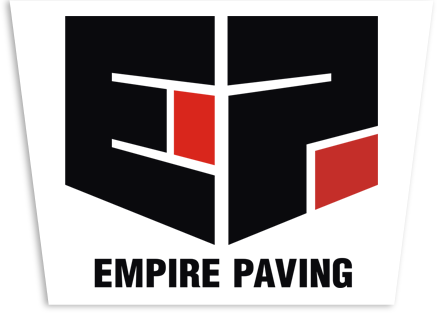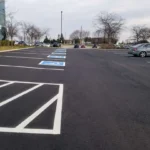Are you concerned with the state of your asphalt pavement?
If your asphalt surface is more than a few years old, it’s only a matter of time before it starts to show signs of wear and tear.
While this isn’t always a cause for alarm, it’s important that you identify issues as they arise and schedule asphalt repairs with your pavement contractor. Here are 11 of the most common types of damage and the ways in which you can repair them!
1. Linear Cracking
Linear cracks run parallel to the asphalt’s laydown direction. This is often caused by poor joint structure. As long as cracks are relatively thin, your paving contractor can fill them. Otherwise, your surface may require an overlay.
2. Transverse Cracking
Conversely, transverse cracks run perpendicular to the asphalt’s laydown direction. These types of cracks are usually the result of frigid conditions combined with heavy traffic. Similar to linear cracks, thin transverse cracks can be sealed while thicker cracks will require an overlay.
3. Edge Cracking
Edge cracks are some of the more common blemishes and are characterized by overgrowth around the perimeter of your surface. Generally, edge cracks point to poor drainage or edge support from the paving company. To remedy this issue, you will want to remove all growth and debris, improve drainage, and apply crack sealant.
4. Block Cracking
As the term suggests, block cracks can cause areas of your asphalt to look like large rectangles. This is most often due to rapid temperature changes or poor asphalt mix design by the asphalt contractor. Thin block cracks can often be sealed, while thick cracks may require an overlay.
5. Fatigue Cracking
Sometimes referred to as alligator cracking, fatigue cracking consists of multiple fractures that intersect with each other. This is typically the result of excessive loads, drastic temperature changes, or a weakness in the pavement’s design. Similar to potholes, fatigue cracking requires full-depth patching to correct.
6. Slippage Cracking
Slippage cracks may look relatively harmless but these “stretch marks” point to poor bonding between layers of asphalt and may evolve into potholes down the road. To fix the issue, your paving company will need to remove and patch the asphalt in these areas.
7. Reflection Cracking
These cracks mirror cracks that exist below the surface, suggesting that the issue is actually worse than it may appear. While most asphalt repairs don’t generally address the root problem, filling the surface-level cracks can prevent further damage to your pavement.
8. Depressions
These sunken areas of pavement are most easily identified after a storm, as they will fill with standing water. Smaller depressions may only need partial patching, while larger depressions may require full removal and replacement of the asphalt in these areas.
9. Potholes
Most people have had unpleasant experiences with potholes while driving. Potholes are steep depressions that are the result of dislodged chunks of asphalt—typically formed by fatigue cracking. As for asphalt repairs, most potholes require full-depth patching.
10. Rutting
Often caused due to weak asphalt or poor compaction, ruts are depressed channels that form where tires most often meet the pavement. If the asphalt has since become stable, these areas may be overlaid; but more severe cases may require the old asphalt to be removed and replaced.
11. Stains
More than just a wet spot, oil and fluid stains contain chemicals that can erode your asphalt. Once your pavement contractor has treated the stains, the surface should then be sealcoated in order to restore the asphalt’s uniform appearance.
Worried that your asphalt is starting to break down? Not to fear—call Empire Paving today for all Toronto asphalt paving and asphalt repair needs!







 We were very pleased with the professional job done by Empire Paving this fall.
Luciano and his team were very reliable, knowledgeable and able to handle all issues that arose during completion of this project. We would highly
recommend Empire Paving for any paving job!
We were very pleased with the professional job done by Empire Paving this fall.
Luciano and his team were very reliable, knowledgeable and able to handle all issues that arose during completion of this project. We would highly
recommend Empire Paving for any paving job!